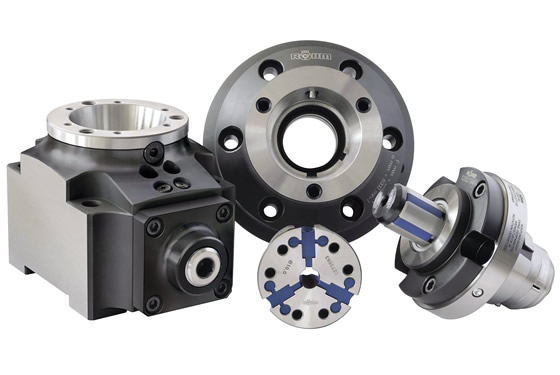END USER: Rohm GmbH, (800) 445-7646, www.rohm-products.com.
CHALLENGE: Streamline the digital parts library used to produce workholders.
SOLUTION: Strategic parts management software.
SOLUTION PROVIDER: Cadenas GmbH, +49 821-258-5800, www.cadenas.de.
In addition to internally designed parts, Röhm GmbH, Sontheim/Brenz, Germany, uses more than 12,000 standard parts to produce its workholding clamps and chucks. (Röhm Products of America is based in Lawrenceville, Ga.) With so many parts, streamlining product search and selection is critical to meeting the needs of Röhm’s 1,500 employees at 60 facilities worldwide, according to the company.
Previously, CAD parts were manually filed in the company’s SAP enterprise application software, which required a lot of effort for every new part. Depending on the part type, each newly created part cost the company at least $270.
As a result, Röhm determined that it needed a parts management system that could reliably and accurately manage all components with significantly less effort. The goal was to simultaneously reduce the diversity and cost of parts.

PARTsolutions strategic parts management software from Cadenas reduces unnecessary parts and increases revenue and productivity at Röhm, which produces workholding clamps and chucks.
Because it already had experience with production software from Cadenas GmbH, Augsburg, Germany, Röhm targeted the software developer’s PARTsolutions strategic parts management software. According to Cadenas, the software helps to manage, find and reduce the volume of CAD components in a fast and easy manner, reducing long-term costs.
“By standardizing design and implementing an easy method of supporting the parts catalog, the design process is streamlined, saving time and finances,” said Heinrich Müller, CAD administrator for Röhm. “Using parts over and over, instead of recreating them, reduces the burden for departments like procurement and logistics.”
He added that the design department mainly uses PARTsolutions. “Initially, our aim was to increase efficiency by improving the design processes. Our design time decreased significantly with the ability to select parts directly from the catalog while designing and using them.”
At Röhm, all workstations equipped with CAD also have access to PARTsolutions, and about 90 engineers are using the software at various company sites.
Initially, the software was used strictly to integrate parts into Röhm’s Solid Edge 3D CAD environment, Müller explained. After this was successfully fulfilled, the workholder manufacturer decided to connect it to its SAP system and implement the user-specific adjustments to its product lifecycle management system. “Cadenas helped us to tailor PARTsolutions exactly to our needs,” he said.
This assistance was accompanied by a series of training sessions to use the software at a high level shortly after the introduction.
Over the course of converting from Solid Edge ST4 to ST6 last year, Röhm introduced the latest version of PARTsolutions to reportedly ensure a smooth transition. Because of this successful integration, the number of workstations equipped with the parts management system will continue to rise with the increasing number of designers using CAD.
“For designers, the parts management system proved to be very intuitive,” Müller said. “Parts can be found and used much easier. Now users can check whether the searched part has been used before it is reincorporated into the material master data, making internal processes run a lot faster.”
Although designers must create new master data for a few parts, the parts management system helps by accelerating this process, according to Müller. “Now that we can focus our efforts on a smaller volume of new parts, we are able to improve our processes significantly. The wasted time and effort of creating and searching for parts in SAP is no longer necessary,” he said, adding that enabling designers to work more efficiently reduces costs.
Since the introduction of the parts management system, Röhm’s product range has considerably increased, resulting in an increase in the required parts to manufacture them as well, Müller said. “However, the creation of new parts increased only slightly compared to the diversity of parts used for our new developments. Unnecessary parts growth will be avoided.”
Related Glossary Terms
- computer-aided design ( CAD)
computer-aided design ( CAD)
Product-design functions performed with the help of computers and special software.







